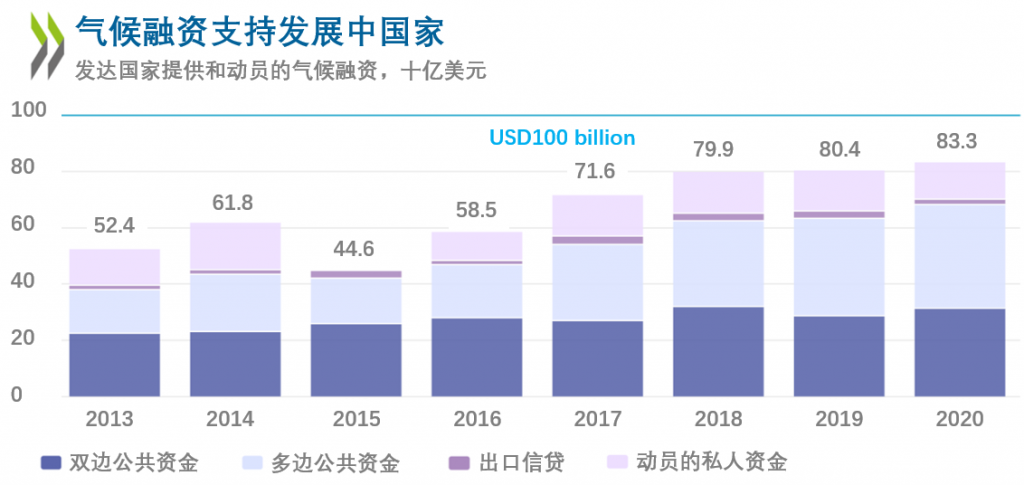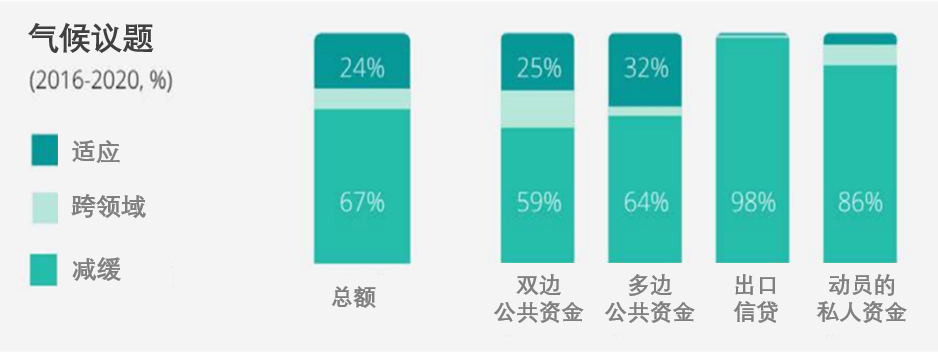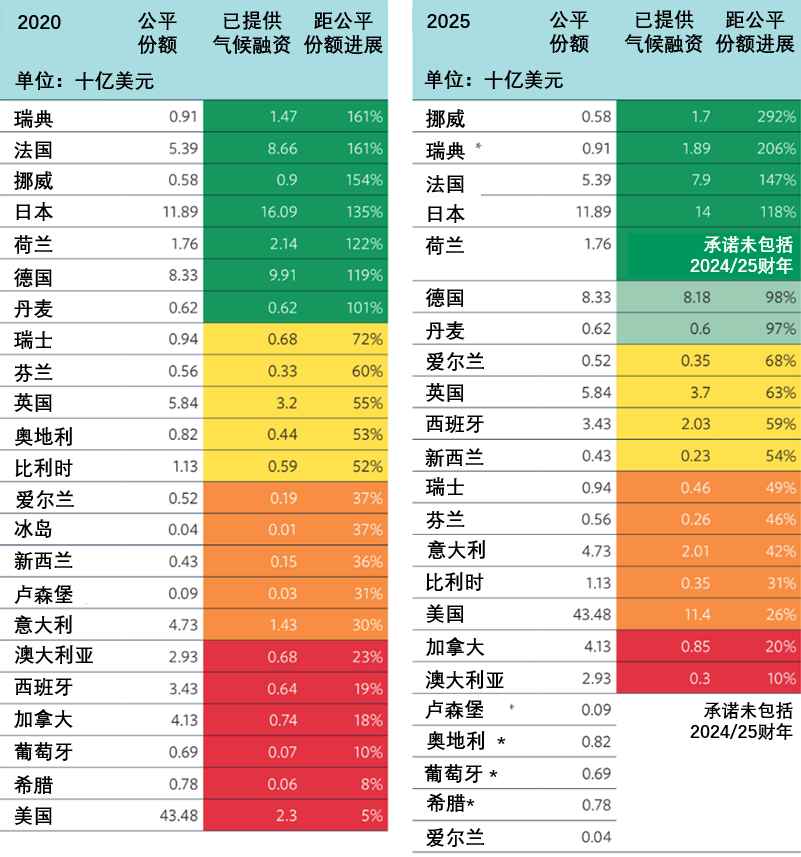Author: Zeng Lu
On November 19, representatives of various countries participating in the 27th United Nations Climate Change Conference in Sharm el-Sheikh reached an agreement to establish a new "loss and damage" fund mechanism. The fund was established following strong calls from developing countries to compensate countries most vulnerable to climate disasters but least responsible for causing climate change.
During the Sharm El Sheikh Conference, UN Secretary-General Guterres urged countries to maintain the ambition of the Paris Agreement to increase global warming by 1.5°C, and emphasized that developed countries must fulfill their collective commitment to provide US$100 billion in climate finance to developing countries every year promise. Climate finance refers to financing that supports actions to mitigate and adapt to climate change. Climate finance includes financing from local, national or transnational sources, as well as alternative financing from government public funds, private investment or other sources. Research shows that the benefits of climate finance far outweigh the upfront costs.
What climate finance commitments have developed countries made?
In 2009, developed countries made a collective commitment at the Copenhagen Climate Conference: by 2020, provide and mobilize US$100 billion per year to support the collective goal of climate action in developing countries.
This target was formalized and extended to 2025 at the Cancun and Paris climate conferences. The $100 billion annual climate finance pledge supports the transition to a low-carbon economy in developing countries and prepares communities for more severe climate impacts.
This financial commitment is significant in helping the most vulnerable countries cope with climate change, helping to increase the predictability of global climate financing and ensuring that global climate financing continues to scale up.
What are the characteristics of climate financing in developed countries?
There is a gap between implementation and committed targets. Multiple studies have shown that developed countries are not meeting their annual climate finance target of US$100 billion. In 2020, developed countries provided and mobilized US$83.3 billion for climate action in developing countries, an increase of 4% over 2019, but there is a gap of US$16.7 billion from the annual target of US$100 billion.
United Nations Secretary-General Guterres emphasized at the Sharm el-Sheikh Climate Change Conference that developed countries must honor their long-overdue commitments and establish a clear and credible roadmap to double climate adaptation funding.
Public funding dominated, with private funding falling short of expectations. In 2020, the bilateral and multilateral public climate financing of developed countries will maintain growth and reach 68.3 billion US dollars, accounting for as much as 82%. Of this, concessional and non-concessional loans amounted to $48.6 billion, accounting for 71% of public climate finance. Compared with 2019, grants totaled $17.9 billion, accounting for 26%.
Private climate finance, leveraged by public climate finance, saw a small decline to a lower-than-expected $13.1 billion. Private climate financing is mostly used in middle-income countries with relatively favorable environment and low risk. Climate-related export credits remain small at $1.9 billion.

More support will be given to climate change mitigation in high-emitting countries. Climate finance is mainly used to support climate change mitigation actions in relatively high-emitting developing countries. In 2020, mitigation finance was down $2.8 billion from the previous year, but still accounted for 58% of climate finance. The scale of adaptation funds increased by US$8.3 billion compared with the previous year, accounting for 41%. This increase is mainly used to support large-scale infrastructure projects believed to produce sustainable results. Mitigation funds are mainly used in the energy and transport sectors. Adaptation finance is distributed more widely across sectors such as water supply, sanitation, agriculture, forestry and fisheries.

The scale of climate financing obtained by different developing countries varies greatly. From 2016 to 2020, climate finance in developed countries will be mainly used in Asia and middle-income countries. 50% of total climate finance is concentrated in 20 countries in Asia, Africa and the Americas, which account for 74% of the developing world population. From 2016 to 2020, small island developing States (SIDS) and least developed countries (LDCs) received climate adaptation financial support per capita higher than the average level of support received by developing countries. However, many developing countries, including the least developed countries, lack the capacity to formulate and implement climate financing projects, as well as obtain and manage international funds, so they cannot obtain more financial support for adaptation and mitigation.
Distribution of climate issues in developing countries in different regions (2016-2020, %)
Assessment of impact and effectiveness needs to be strengthened. Because UNFCCC does not compel developing countries to report relevant information, and some developing countries have insufficient ability to collect and verify relevant information. Currently, there is relatively limited information on measuring and assessing the impact and effectiveness of climate finance in developed countries. In the future, the monitoring and evaluation of the impact and effectiveness of climate financing in developed countries needs to be further strengthened.
Climate finance performance in developed countries is mixed
A recent study tracked the allocation and implementation of a US$100 billion climate finance target in developed countries. The study calculates the shares and responsibilities of developed countries in providing and mobilizing climate finance based on the developed countries' ability to pay and historical responsibility for climate change. Developed countries fell short of their collective climate finance targets in 2020 and 2021, the study found, and the target is projected to remain off the charts in 2022.
In 2020, seven developed countries, including Sweden, France, Norway, Japan, the Netherlands, Germany and Denmark, provided and mobilized their share of climate financing commensurate with their economic strength and emission responsibilities, and pledged to pledge the full amount by 2025. France and Japan have relatively limited climate financing. Most of the climate finance in both countries is provided bilaterally and in the form of loans, with only a small portion going to adaptation.
International climate finance provided by the US, Canada and Australia is woefully inadequate. The United States is largely responsible for the climate finance gap. In 2020, the US provided and mobilized just 5% of its fair share of climate finance. Although the US economy is 40% larger than the EU's, the US provides and mobilizes only one-twelfth the climate finance of the EU. Canada and Australia provided their fair share of 18% and 23% of climate finance respectively, with neither country committing to provide more climate finance by 2025.
2020-2025 Annex II Countries' Equitable Share of $100 Billion Climate Finance Implementation Progress Scorecard

Which countries should also provide climate finance?
According to the study, the economic income and cumulative per capita greenhouse gas emissions of Israel, Qatar and Singapore are higher than those of at least five countries that should provide climate financing under the UNFCCC. Brunei, Kuwait, South Korea and the United Arab Emirates have more cumulative GHG emissions per capita than at least three countries that provide climate finance. Therefore, these countries should also start providing climate finance. The research team believes that, based on the two criteria of economic income and cumulative per capita greenhouse gas emissions, China has not entered the range of countries that should provide climate financing.
References
https://www.un.org/zh/climatechange/raising-ambition/climate-financehttps://news.un.org/zh/events/cop27https://www.oecd.org/climate-change/finance-usd-100-billion-goal/https://odi.org/en/publications/a-fair-share-of-climate-finance-an-appraisal-of-past-performance-future-pledges-and-prospective-contributors/
Some pictures in this article come from the Internet

